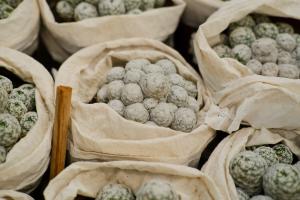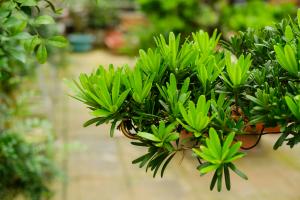How Long Can Plants Stay in Plastic Pots?
Plastic pots are popular among gardeners because they are affordable, lightweight, and easy to move around. However, many people are unsure about how long they should keep their plants in plastic pots before transferring them to a larger container. In this article, we will explore the factors that affect the lifespan of plants in plastic pots and provide some tips on how to keep your plants healthy for as long as possible.
The Lifespan of Plants in Plastic Pots
The lifespan of plants in plastic pots depends on various factors, such as the size of the pot, the quality of the soil, the type of plant, and the growing conditions. Generally, small plants can stay in small plastic pots for a longer time than larger plants, as they have smaller root systems that can adapt to the limited space. However, most plants will eventually outgrow their plastic pots and require a bigger container to thrive.
The quality of the soil also plays a crucial role in the lifespan of plants in plastic pots. If the soil is of poor quality, the plants will not be able to absorb the necessary nutrients and moisture, which can lead to stunted growth or even death. It's essential to ensure that the soil is well-draining, rich in nutrients, and appropriate for the specific type of plant you are growing.
The type of plant also affects how long it can stay in a plastic pot. Some plants, such as cacti or succulents, have shallow root systems that can tolerate being in a small pot for a long time. In contrast, plants with deep root systems, such as tomatoes or citrus trees, require a larger container to develop properly. It's important to research the specific needs of the plants you are growing to determine how long they can stay in a plastic pot.
Lastly, the growing conditions also impact the lifespan of plants in plastic pots. If the light, temperature, and humidity levels are not suitable for the plant, it may not grow as well, and its lifespan may be shortened. Ensuring that the plant receives adequate water, sunlight, and proper air circulation is vital for its health.
Tips for Keeping Plants Healthy in Plastic Pots
1. Monitor the growth of your plant and determine when it needs to be repotted. If the roots are visibly growing out of the container or the plant appears stunted, it's time to transfer it to a larger pot.
2. Choose a high-quality potting mix that is specifically formulated for the plant you are growing. Avoid using soil from your garden, as it may contain pests or diseases that will harm your plant.
3. Ensure that the plastic pot has adequate drainage holes to prevent water from accumulating, which can lead to root rot. You can also add a layer of gravel or perlite at the bottom of the pot to aid drainage.
4. Place the plastic pot in a location that receives adequate sunlight, and ensure that it has proper air circulation. Avoid placing the pot near drafty windows or air conditioning vents, as this can affect the plant's growth.
5. Regularly water your plant, but be careful not to overwater it. Most plants require watering when the top inch of soil feels dry to the touch.
Conclusion
In summary, the lifespan of plants in plastic pots depends on several factors, such as the size of the pot, the quality of the soil, the type of plant, and the growing conditions. While some plants can stay in small plastic pots for an extended period, most plants will need to be transferred to a larger container eventually. By following the tips outlined above, you can help ensure that your plants stay healthy in plastic pots for as long as possible.

 how many times do yo...
how many times do yo... how many planted tre...
how many planted tre... how many pine trees ...
how many pine trees ... how many pecan trees...
how many pecan trees... how many plants comp...
how many plants comp... how many plants can ...
how many plants can ... how many plants and ...
how many plants and ... how many pepper plan...
how many pepper plan...
































